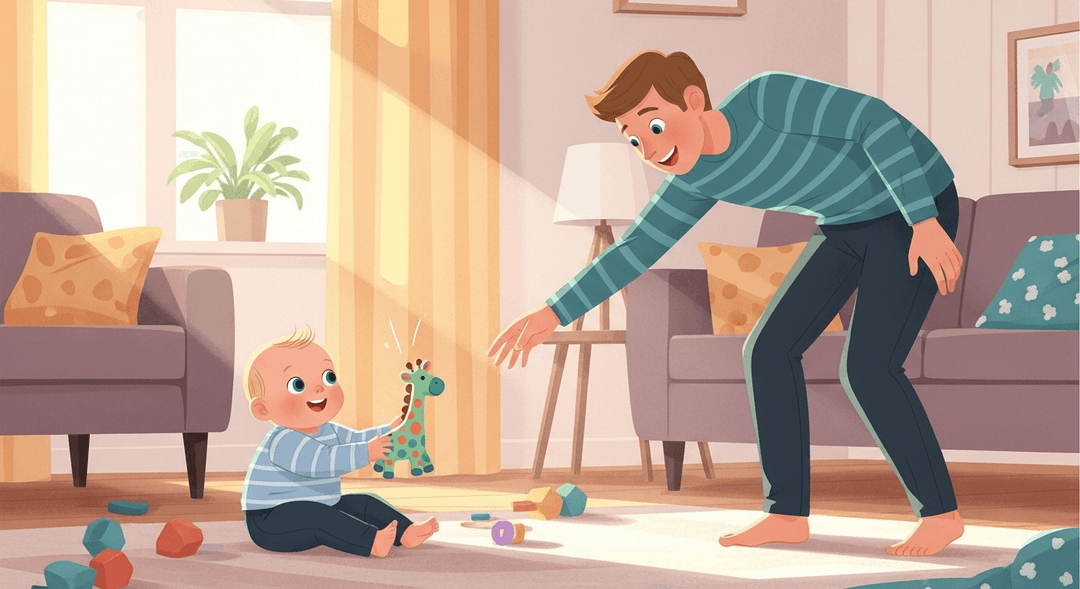Teach Cause and Effect
Ever wondered if your baby is running a secret experiment to see how many times you’ll retrieve that same squeaky giraffe? Welcome to the drop-and-fetch Olympics, where your back gets a workout and your baby gets a PhD in gravity. If you’re ready to embrace the endless loop of pick-up, drop, repeat (and maybe question your own sanity), this one’s for you.
When babies drop things and watch you pick them up (or don’t), they’re building neural connections about how their actions shape the world. This is early science at its messiest: they’re learning about gravity, object permanence, and that people respond to their actions. For parents, it’s a lesson in patience and lower back strength, but also a bonding moment—because every giggle is a reward circuit lighting up in both your brains.
How to do it
-
Choose a toy that is sturdy and safe—something that won’t break easily or damage your floor if dropped.
-
Let your baby hold the toy while they are sitting in their high chair or at the edge of their playpen.
-
When your baby drops the toy, pause for effect. Make eye contact and say “uh-oh!” in an engaging tone. Then, pick up the toy and hand it back to your baby.
-
Repeat this process as many times as you (and your toy collection) can handle.
-
Occasionally, don’t pick up the toy right away. This helps your baby learn that actions don’t always get an immediate response—an early lesson in boundaries.
Tips:
- Use toys that are easy to clean, as they will likely hit the floor multiple times.
- Keep a few different toys nearby to keep the activity interesting.
- Make your reactions playful and consistent to help your baby connect cause and effect.
- Watch for signs that your baby is losing interest or getting frustrated, and switch activities if needed.
